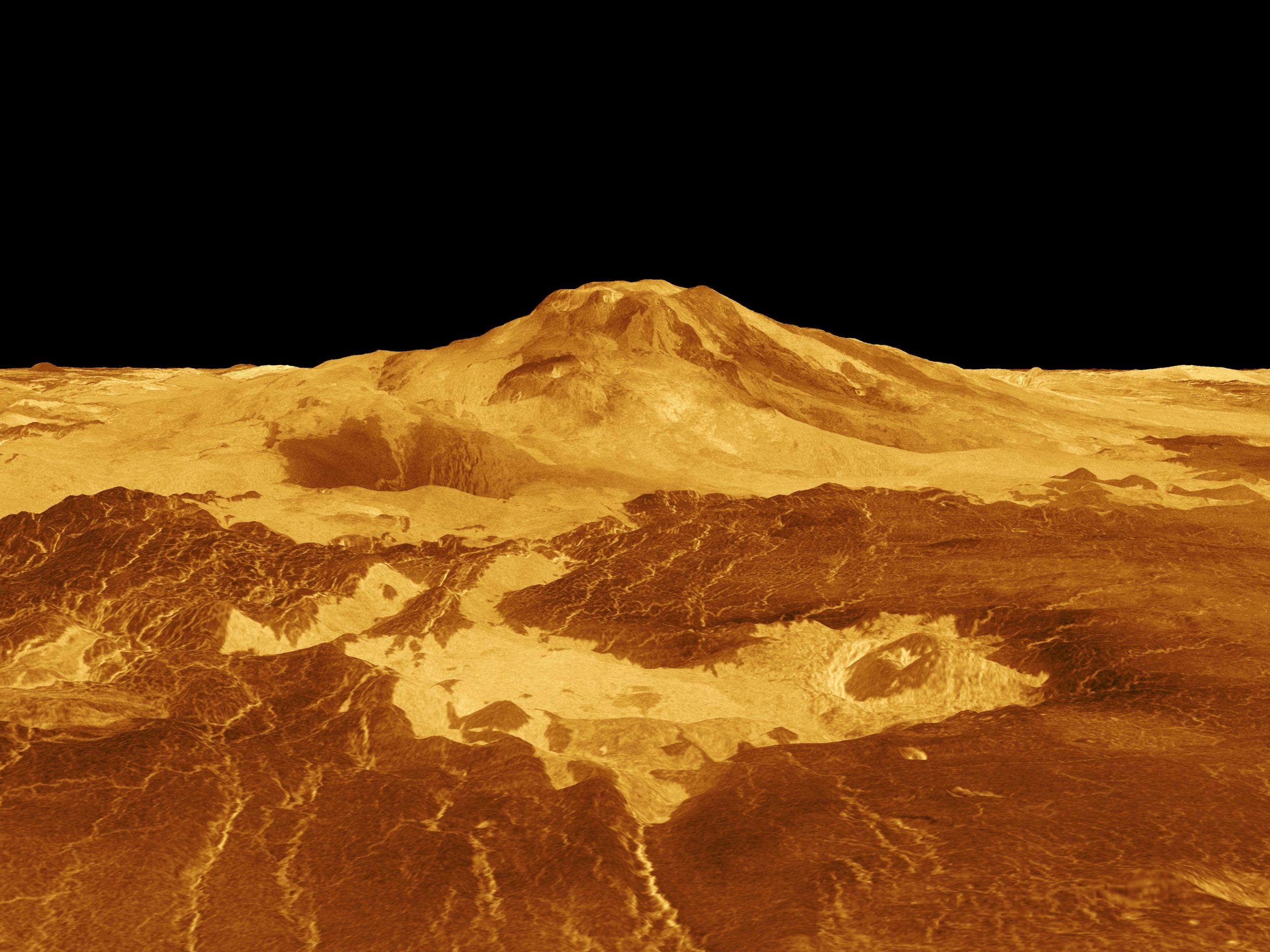Why Venus died the heat death – and the Earth did not
Venus, Earth’s hot little sister, was probably once habitable, too, a long time ago. It basically orbits in the habitable zone. Surface temperatures of 450 degrees would actually not be expected there, were it not for the dense CO2 atmosphere that heats up the planet with its greenhouse effect. But why did this happen on Venus – and not on Earth so far? Volcanism is probably to blame, as researchers show in a new paper. According to the paper, volcanic activity that lasted hundreds to thousands of centuries and ejected massive amounts of material may have helped transform Venus from a temperate and humid world into the acidic greenhouse it is today.
The paper also addresses similar processes on Earth that caused several mass extinctions on our planet millions of years ago. “By understanding the records on Earth and Venus, we can determine whether these events could have caused Venus’ current state,” says Dr. Michael J. Way of NASA’s Goddard Institute for Space Studies in New York, the study’s lead author. These eruption events are gigantic. They last tens of thousands or even hundreds of thousands of years and can deposit more than 100,000 cubic kilometers of volcanic rock on the surface, enough to bury the entire state of Texas half a mile deep.
Venus today has surface temperatures averaging 450 degrees Celsius and an atmosphere 90 times as dense as Earth’s. According to the study, these massive volcanic eruptions may have triggered these conditions at some point in Venus’ early history. In particular, the occurrence of several such eruptions in a short geologic span (within a million years) may have led to a runaway greenhouse effect that initiated the planet’s transition from humid and temperate to hot and dry. Large fields of solidified volcanic rock now cover a total of 80 percent of Venus’ surface, Way said.
Life on Earth has also experienced at least five major mass extinction events since the emergence of multicellular life about 540 million years ago, each of which wiped out more than half of the animal life on the entire planet. According to this and other studies, most of these extinction events were caused or exacerbated by volcanic activity. Fortunately, in the case of Earth, the climatic perturbations from these events were not enough to trigger a runaway greenhouse effect like the one on Venus, for reasons that Way and other scientists are still trying to figure out.
